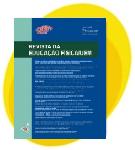<b>Hemisphericity and the time space performance in a psychomotor task: right hemispheric processing preference and gender</b>- DOI: 10.4025/reveducfis.v20i4.6649
Keywords:
Dominance cerebral. Gender identity. Space perception.
Abstract
The mental process is characterized by a significant right hemispheric preference (HD), bi-hemispheric (BH) or left hemispheric (HE). Researches have shown tendencies associated with different ages and situations in which a preference is more beneficial when aligned to the hemisphere processor. Right preference was found in the study, in associated tasks, hypothesized to be a possible difference between genders. Sample of 30 individuals divided into three groups by hemispheric type. The subjects followed, on task, a stimulus to a target in a higher special temporal complexity. The statistics showed the HD group, male, significantly higher than HE (p<0.05) and also quantitatively superior to BH. Also to the female groups in all conditions (p<0.05). The female HD group was equivalent to the male HE, and statistically superior to the other women in the tasks (p <0.05). Results suggest that content of education must meet the specific processing of the learner and set in relation to gender.Downloads
Download data is not yet available.
Metrics
Metrics Loading ...
Published
2009-12-23
How to Cite
1.
Ferraz PCG, Calomeni MR, Uchoa P, Botelho L, Silva VF da. <b>Hemisphericity and the time space performance in a psychomotor task: right hemispheric processing preference and gender</b>- DOI: 10.4025/reveducfis.v20i4.6649. JPhysEduc (Maringá) [Internet]. 2009Dec.23 [cited 2025Dec.25];20(4):499-08. Available from: https://periodicos.uem.br/ojs/index.php/RevEducFis/article/view/6649
Issue
Section
Original Articles
• Authors retain the copyright and full publishing rights without restrictions.

This work is licensed under a Creative Commons Attribution 4.0 International License.









_1502.jpg)











